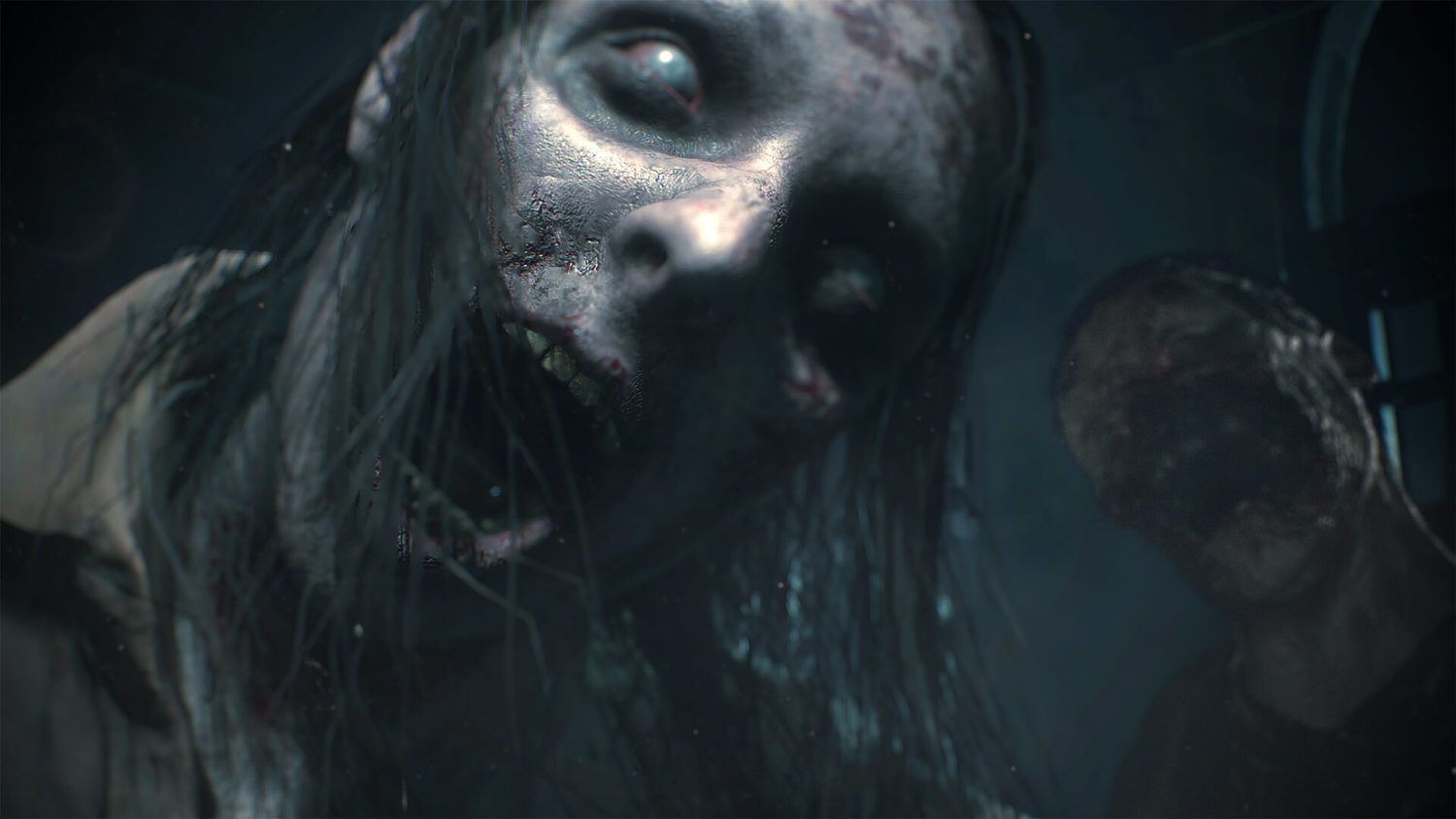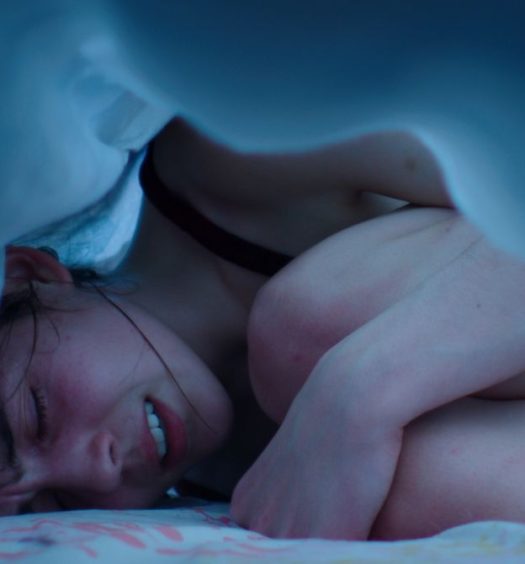The Resident Evil 2 remake is a new entry in the long and storied history of this legendary sequel. After changing the face of video games with the release of the original Resident Evil, Capcom decided to go all out for its sequel and in the process perhaps bit off more than they could chew. Call it hubris, call it naiveté, call it whatever you want but Capcom’s trials and tribulations while creating Resident Evil 2 is firmly planted in video game industry lore.
Mere months after the blockbuster release of original Resident Evil, Capcom got started on Resident Evil 2. With first-time game director Hideki Kamiya at the helm, the idea was to keep fans on their toes through an original story unrelated to the first game and by adding more zombies that were harder to kill. As it turned out things didn’t quite work out how they expected. The game that would eventually be called Resident Evil 1.5 was such a boring experience that even with the project around 70% finished, Capcom scrapped the whole thing and started over again. The outcome of such a risky decision led to a game that many fans consider the best pure Resident Evil experience in the franchise, and an unfinished curiosity that would take years for diehard fans to uncover.
Enter Resident Evil 1.5
Resident Evil 1.5 was a lot of things, whether being good is one of them is up to interpretation but it was ambitious, we can give it that. The development team at Capcom began creating all the features of RE2 in isolated teams while Kamiya banged away at the game’s script. The first he’d ever written.
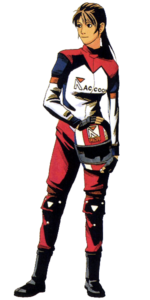
Elza Walker
Narratively speaking, the game didn’t have any ties to the original RE. Originally Claire Redfield was a character named Elza Walker, a motorcycle riding college student coming home to find Raccoon City overrun with zombies. Other decisions like Leon S Kennedy originally being a seasoned vet instead of a first-day rookie he ended up as were also made. Interestingly enough, Leon and Elza were originally never supposed to meet. They’d influence each other’s playthroughts but they’d never know the other existed. Also, the police precinct wasn’t the gothic monstrosity RE2 fans know it to be, instead, it was a more realistically modeled building typical of the time period.
As mentioned before, one of the ideas behind Resident Evil 2 was to have more zombies on screen at one time. To accomplish this, zombies were created with very low polygon counts, lower polygon count means less work the Playstation had to do, which in turn allowed for more zombies to fill the screen. Beyond zombies, mutant gorillas were added to the mix, whether they were meant to completely replace the lickers I’m not entirely clear on. The various creatures were said to have the ability to mutate over time making for a different experience when revisiting locations once thought to be cleared. Enemies, in general, took far more bullets to take down, relying on shotguns for one shot kills wasn’t going to cut it anymore. The main structure of the game was slightly different also. Resident Evil 1.5 had Leon starting the game on the roof of the RPD, making his way down, saving as many survivors on the way. Elza had a similar goal to find survivors while trying to escape.
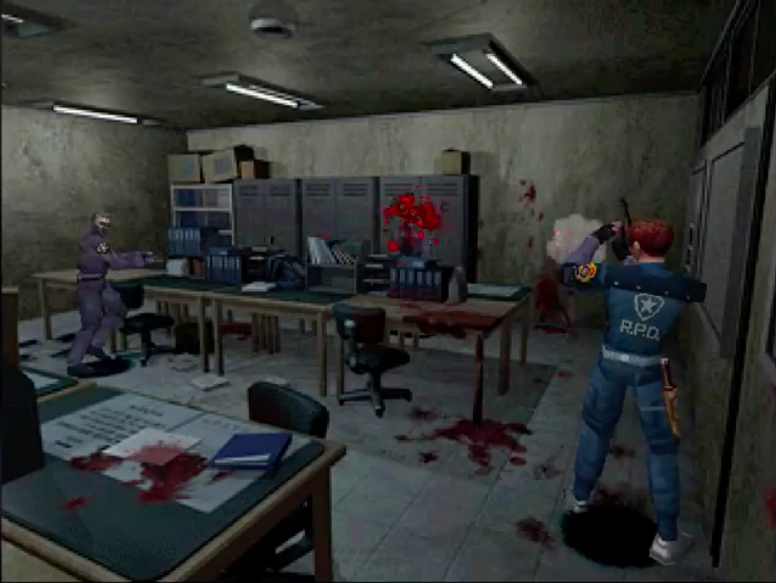
Resident Evil 1.5
As a result, Resident Evil 1.5 was said to be a bit of a mess. Creating the game’s various features almost independent of each other made for an incohesive experience. Perhaps worse yet, while having a ton of zombies on screen at once was an accomplishment the compromise on the zombie’s designs made them less scary. Wandering around a dull environment, killing uninteresting monsters with absolutely no ties to the original game made Capcom worried. This revelation sent them into a panic, searching for a way forward.
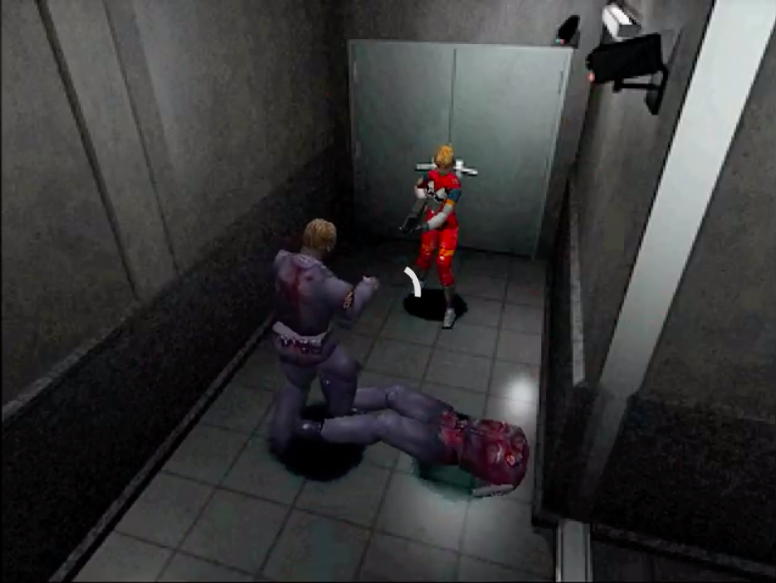
Resident Evil 1.5
For whatever reason Capcom’s marketing team didn’t get the memo. They were out and about showing off Resident 1.5 at all the trade shows, they’re doing live demos, they’re pushing out marketing materials to all the major game outlets. All the while the development team was getting ready to do the impossible.
With three months left before the release, Capcom went to professional scriptwriter Noboro Sugimura for help. After looking at a nearly finished build of the game, his recommendation was to scrap the whole thing and start fresh. With the game almost finished, the press already publishing photos and the hype for the game building, Kamiya had to break it to the team that they’d be starting over.

